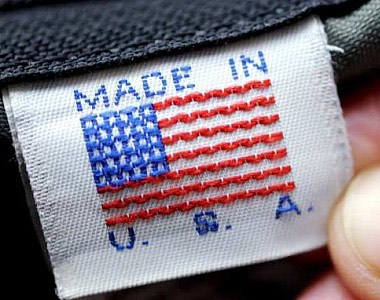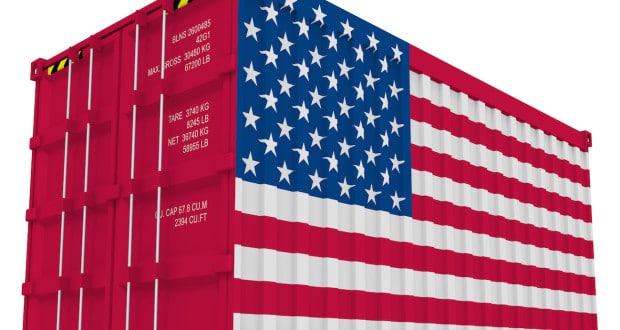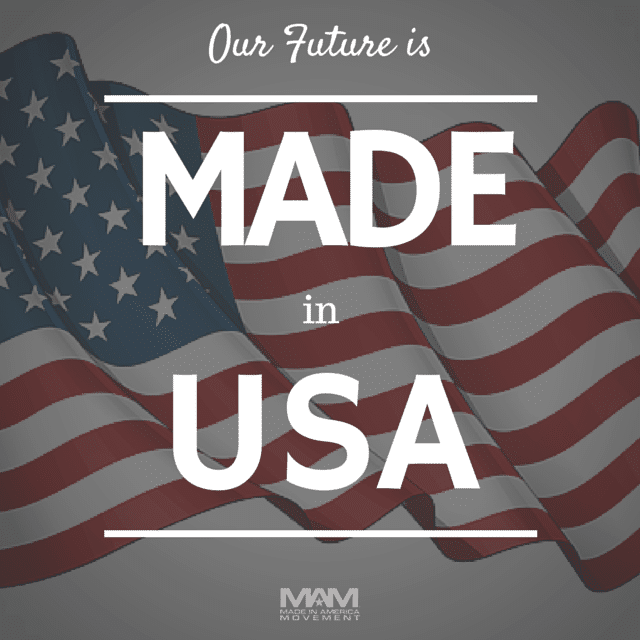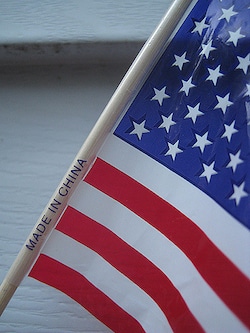With Exports Rising, US Cities Expand Their Global Footprint

Daniel Acker | Bloomberg | Getty Images
Jack Brown Produce workers sort apples on a packing line in Sparta, Mich. The state, a big exporter of agricultural goods, is among U.S. regions raising its export profile.
It’s well-known American jobs have been lost to overseas competition. While work on U.S. manufacturing floors has declined, overseas markets have developed a growing appetite for American-made goods—from chemicals and wood products, to medical devices.
Many low-skill, labor-intensive positions—including those in apparel and footwear—have shipped offshore. But U.S. cities of all sizes are producing and showcasing more capital-intensive durable goods for foreign buyers.
“More U.S. cities have entered the hierarchy of global cities,” said Fran Tonkiss, a sociologist and director of the Cities Program at the London School of Economics.
In international trade, scalable specialization is rewarded. In other words, if you make a specific widget that a pocket of the world needs, you’ve just staked a claim in the global economy. That kind of niche specialization is particularly pronounced in smaller U.S. cities, whose economies tend to be focused on a handful of export products.
In fact, American industries, including chemicals, machinery and transportation equipment, are forecast for big export gains rather than deficits. That’s partly because the U.S. is widening its production-cost advantage over leading European nations and Japan, according to an August report from the Boston Consulting Group.
“Over the past 40 years, factory jobs of all kinds have migrated from high-cost to low-cost countries,” Harold L. Sirkin, a senior partner at BCG and co-author of the report, said in a release. “Now, as the economics of global manufacturing changes, the pendulum is finally starting to swing back.”
By the end of the decade, cost advantages, including lower domestic energy prices, could help the U.S. capture up to $115 billion in annual exports from other nations. Throw in some reshoring—the reversal of outsourcing—from China, and increased U.S. exports could generate up to 5 million new jobs, according to BCG’s analysis.
But fulfilling such potential depends on many factors. City planners say the road to export-driven momentum requires investments in areas as varied as infrastructure and enticing skilled professionals to cities that are not necessarily on their radar. A well-trained, diverse workforce means cities can pivot as global trade winds shift.
Detroit’s decades-long manufacturing decline and bankruptcy filing in July offered a lesson about not putting all the eggs in one basket—cars, in Detroit’s case.
Metropolitan areas nationwide are instead taking a diversified, grassroots approach to promoting their goods. The international marketplace is shifting, and U.S. cities with global vision are making strategic bets in raising their export profiles.

Source: City of Kingsport, Tenn. Kingsport, Tenn., and other U.S. cities are exporting more goods and services amid a shifting global economy. Downtown Broad Street beckons with the Appalachians’ Clinch Mountain in the background.
“To compete in the global economy, we have to compete in the ports.”- Alvin Brown, Mayor of Jacksonville, Fla.
Kingsport, Tenn., is one of them. A community of about 52,000 residents nestled amid the Appalachian Mountains, it was founded after the Civil War to capitalize on expanding rail lines and increased trade. In fact, Kingsport is one of the nation’s first planned, privately financed cities.
In 1994, Eastman Kodak’s spinoff of Eastman Chemical, in which thousands of manufacturing jobs were lost in Kingsport, was a call to support the company, which sells its products worldwide.
The move also pushed the region to shore up and promote its industrial base—which includes pharmaceuticals, aeronautical accessories, and paper and packaging—outside of the U.S.
“Eastman is a truly global company, and you put it in what’s presumed to be a backwards Appalachian setting,” said Jeff Fleming, Kingsport’s assistant city manager for development. “When you find out it’s not that at all, it’s pretty remarkable.”
More Jobs Means Expanding Ports For Exports[p][/p]
Fleming and leaders in other cities see big potential in export-led growth. Exports in 40 metropolitan areas—including many far from ports—have the potential to grow by 70 percent or more in this decade, according to a report by the U.S. Conference of Mayors that was prepared by IHS Global Insight and released last year.
Put another way, exports are forecast by 2020 to account for more than a third of the growth in U.S. GDP of $16.8 trillion.
Bottom line: Creating jobs means expanding exports.
“To compete in the global economy, we have to compete in the ports,” said Alvin Brown, mayor of Jacksonville, Fla., and chairman of the Conference of Mayors Metro Exports and Ports Task Force.
“Trade will become a larger economic opportunity not only for Jacksonville, but nationally,” he said. But the export growth will be limited if investments are not made in ports, railways, roads and bridges, the report said.
Many urban planners will be watching the expansion of the Panama Canal slated for 2015.
Cities are also working collectively to help boost exports.
Michigan city planners revived an export program that involved opening three foreign offices (in Toronto, Shanghai and Sâo Paulo) with plans for a fourth location. Export sectors include automotive parts’ machinery and tools; medical devices; information technology and digital media; medicine and biotechnology; and agricultural products, including soy beans, asparagus and apples.
In addition to establishing their presence abroad, Michigan cities have campaigned to attract skilled workers and promote tourism.
“Foreign-born talent become ambassadors, and they help make connections to those countries,” said Deanna Richeson, director of export strategy for the Michigan Economic Development Corp.
Last month, the MEDC announced a second year of financial assistance to the state’s small and midsize businesses for export-related activities. In September, leaders from 21 Michigan companies traveled to China to meet with prospective partners, distributors and buyers to increase export opportunities.
(Read more: ‘Made in USA’ fuels new manufacturing hubs in apparel)
Exports Nation
Data suggest that such targeted projects can yield results. An “Export Nation 2013” report from the Brookings Institution said that exports have played a central role in the economic recovery, particularly in the top 100 metro areas.
Despite such gains, U.S. cities aren’t on a level with London or Singapore. Of the world’s 300 largest metropolitan economies—which account for 48 percent of global GDP—only 85 are in North America, according to Brookings data.
Export gains among U.S. cities are noteworthy, however, according to Tonkiss at the London School of Economics.
“The U.S. is a big net importer,” she said. “What’s distinctive is the U.S. working from such a small export base.”
Over 20 years ago, a Dutch-American sociologist wrote what would become a landmark book on three of the world’s largest urban economies: New York, London and Tokyo. The research in “The Global City” proved seminal and advanced understanding of how manufacturing and centralized key services, such as finance and accounting, create command centers for the global economy.
Smaller communities now are elbowing their way onto the international stage by increasing exports.
“In the years ahead,” said Sirkin at BCG, “it could be America’s turn to be on the receiving end of production shifts, as more companies use the U.S. as a low-cost export platform.”








Leave a Reply
Want to join the discussion?Feel free to contribute!